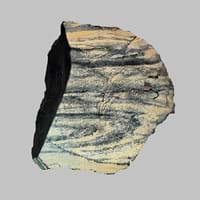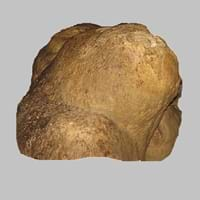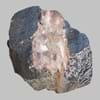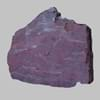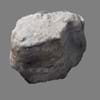Definition
Oil Shale is a fine-grained sedimentary rock from which oil is extracted
Travertine is a mineral consisting of layered calcium carbonate formed by deposition from spring waters
Discoverer
Unknown
Marcus Vitruvius Pollio
Etymology
From Old English scealu in its base sense of thing that divides or separate
From Italian travertino a kind of building stone, from Tiburs, adjective from Tibur (Tivoli), in Italy
Class
Sedimentary Rocks
Sedimentary Rocks
Sub-Class
Durable Rock, Soft Rock
Durable Rock, Medium Hardness Rock
Group
Not Applicable
Not Applicable
Other Categories
Fine Grained Rock, Opaque Rock
Fine Grained Rock, Opaque Rock
Color
Black, Brown, Buff, Green, Grey, Red, Yellow
Beige, Black, Blue, Brown, Grey, Red, White, Yellow
Durability
Durable
Durable
Interior Uses
Not Yet Used
Decorative Aggregates, Entryways, Flooring, Homes, Interior Decoration
Exterior Uses
Not Yet Used
As Building Stone, As Facing Stone, Paving Stone, Garden Decoration, Office Buildings
Other Architectural Uses
Not Yet Used
Curbing
Construction Industry
Cement Manufacture, Construction Aggregate, for Road Aggregate, Serves as an Oil and Gas Reservoir rock
As Dimension Stone, Building houses or walls, Cement Manufacture, Construction Aggregate, for Road Aggregate, Raw material for the manufacture of mortar
Medical Industry
Not Yet Used
Not Yet Used
Antiquity Uses
Artifacts
Artifacts, Jewellery, Monuments, Sculpture, Small Figurines
Commercial Uses
An Oil and Gas Reservoir
Cemetery Markers, Creating Artwork, Gemstone, Jewelry, Paper Industry, Pottery
Types
Carbonate-rich Shale, Siliceous Shale and Cannel Shale
Not Available
Features
Easily splits into thin plates, Generally rough to touch, Is one of the oldest rock, Very fine grained rock
Stalactites and stalagmites are formed from this rock, Surfaces are often shiny, Very fine grained rock
Archaeological Significance
Monuments
Not Yet Used
Used
Famous Monuments
Not Applicable
Colosseum in Rome, Italy, Sacré Coeur in Paris, France, Trevi Fountain in Rome, Italy
Sculpture
Not Yet Used
Used
Famous Sculptures
Not Applicable
Data Not Available
Pictographs
Not Used
Used
Petroglyphs
Not Used
Used
Figurines
Not Yet Used
Used
Formation
Oil Shale forms on the beds of seas and lakes and its formation starts with the organic debris settling and accumulating at the bottom of a lake or sea which are then transformed into rock with the help of high temperature and pressure.
Travertine is a type of sedimentary rock formed when a river carries or transports pieces of broken rock which then undergo sedimentation. They are then subjected to high temperature and pressure hence forming travertine rock.
Mineral Content
Albite, Biotite, Calcite, Chert, Chlorite, Dolomite, Hematite, Micas, Muscovite or Illite, Pyrite, Quartz, Silica, Sulfides
Calcite, Clay, Feldspar, Micas, Quartz
Compound Content
Ca, Fe, Mg, Silicon Dioxide, Sodium
Ca, NaCl, CaO, Oxygen
Types of Metamorphism
Not Applicable
Not Applicable
Types of Weathering
Biological Weathering, Chemical Weathering, Mechanical Weathering
Biological Weathering, Chemical Weathering, Mechanical Weathering
Types of Erosion
Chemical Erosion, Sea Erosion, Water Erosion
Chemical Erosion, Coastal Erosion, Glacier Erosion
Grain Size
Very fine-grained
Fine Grained
Fracture
Not Available
Splintery
Porosity
Highly Porous
Highly Porous
Luster
Dull
Dull to Pearly
Compressive Strength
Not Available
Cleavage
Slaty
Non-Existent
Specific Gravity
2.2-2.8
1.68
Transparency
Opaque
Opaque
Density
2.4-2.8 g/cm3
2.71 g/cm3
Resistance
Heat Resistant, Impact Resistant
Impact Resistant, Pressure Resistant, Wear Resistant
Deposits in Eastern Continents
Asia
Bangladesh, China, India, Israel, Jordan, Russia, Syria, Thailand, Turkey
China, Russia
Africa
Ethiopia, Kenya, Morocco, South Africa, Tanzania
Not Yet Found
Europe
Austria, France, Germany, Greece, Italy, Romania, Scotland, Spain, Sweden, Switzerland
Austria, Italy, Portugal, United Kingdom
Others
Greenland, Not Yet Found
Not Yet Found
Deposits in Western Continents
North America
Canada, USA
Canada, USA
South America
Bolivia, Brazil, Chile, Colombia, Ecuador, Peru, Venezuela
Argentina, Bolivia, Ecuador
Deposits in Oceania Continent
Australia
New South Wales, New Zealand, Queensland, Victoria, Western Australia
Not Yet Found
Oil shale vs Travertine Characteristics
Though some rocks look identical, they have certain characteristics which distinguish them from others. Characteristics of rocks include texture, appearance, color, fracture, streak, hardness etc. Oil shale vs Travertine characteristics assist us to distinguish and recognize rocks. Also you can check about Properties of Oil shale and Properties of Travertine. Learn more about Oil shale vs Travertine in the next section. The interior uses of Oil shale include Not yet used whereas the interior uses of Travertine include Decorative aggregates, Entryways, Flooring, Homes and Interior decoration. Due to some exceptional properties of Oil shale and Travertine, they have various applications in construction industry. The uses of Oil shale in construction industry include Cement manufacture, Construction aggregate, For road aggregate, Serves as an oil and gas reservoir rock and that of Travertine include As dimension stone, Building houses or walls, Cement manufacture, Construction aggregate, For road aggregate, Raw material for the manufacture of mortar.
More about Oil shale and Travertine
Here you can know more about Oil shale and Travertine. The life cycle of a rock consists of formation of rock, composition of rock and transformation of rock. The composition of Oil shale and Travertine consists of mineral content and compound content. The mineral content of Oil shale includes Albite, Biotite, Calcite, Chert, Chlorite, Dolomite, Hematite, Micas, Muscovite or Illite, Pyrite, Quartz, Silica, Sulfides and mineral content of Travertine includes Calcite, Clay, Feldspar, Micas, Quartz. You can also check out the list of all Sedimentary Rocks. When we have to compare Oil shale vs Travertine, the texture, color and appearance plays an important role in determining the type of rock. Oil shale is available in black, brown, buff, green, grey, red, yellow colors whereas, Travertine is available in beige, black, blue, brown, grey, red, white, yellow colors. Appearance of Oil shale is Muddy and that of Travertine is Fibrous. Properties of rock is another aspect for Oil shale vs Travertine. The hardness of Oil shale is 2-3 and that of Travertine is 3-4. The types of Oil shale are Carbonate-rich Shale, Siliceous Shale and Cannel Shale whereas types of Travertine are Not Available. Streak of rock is the color of powder produced when it is dragged across an unweathered surface. The streak of Oil shale and Travertine is white. The specific heat capacity of Oil shale is 0.39 kJ/Kg K and that of Travertine is 1.09 kJ/Kg K. Depending on the properties like hardness, toughness, specific heat capacity, porosity etc., rocks are resistant to heat, wear, impact, etc.Oil shale is heat resistant, impact resistant whereas Travertine is impact resistant, pressure resistant, wear resistant.
